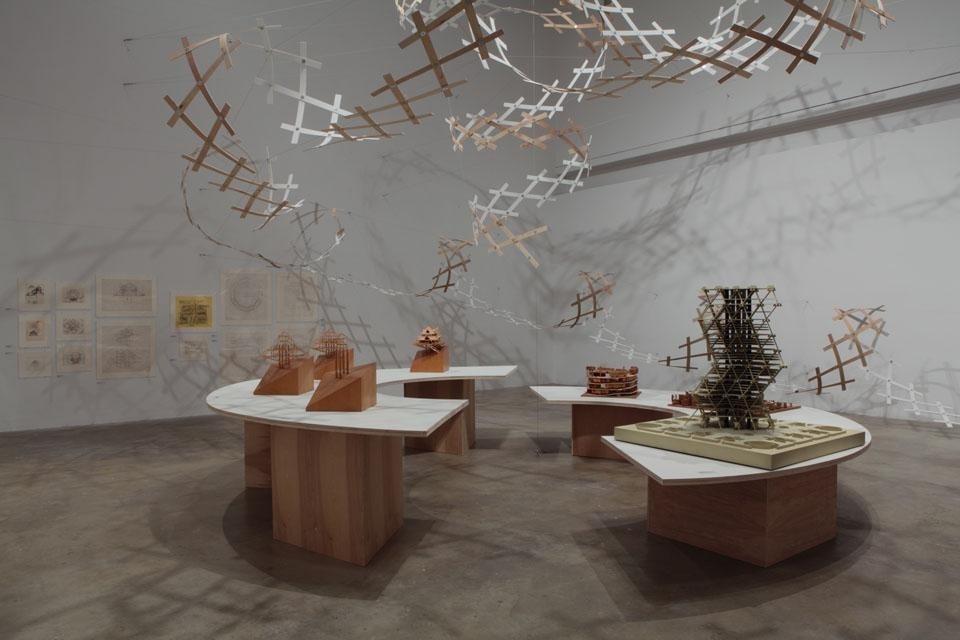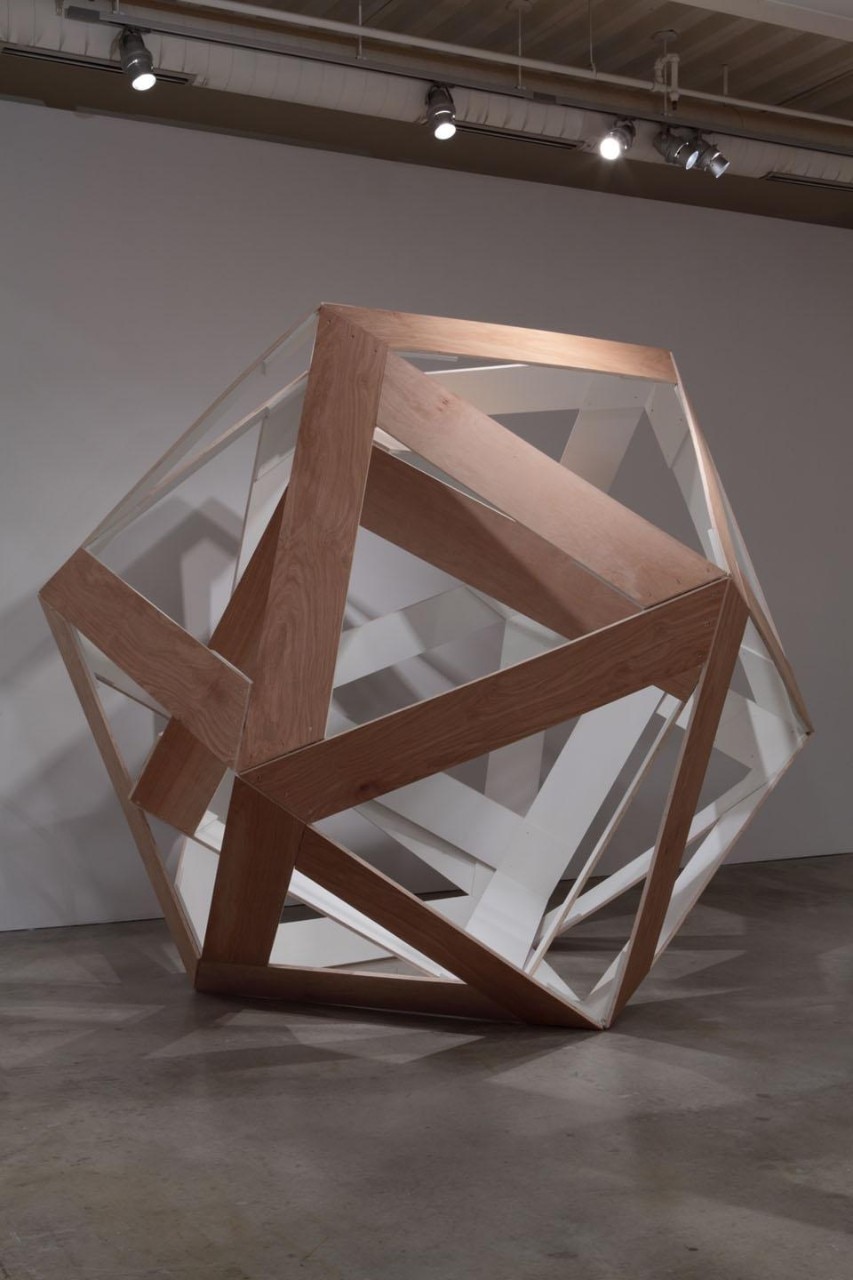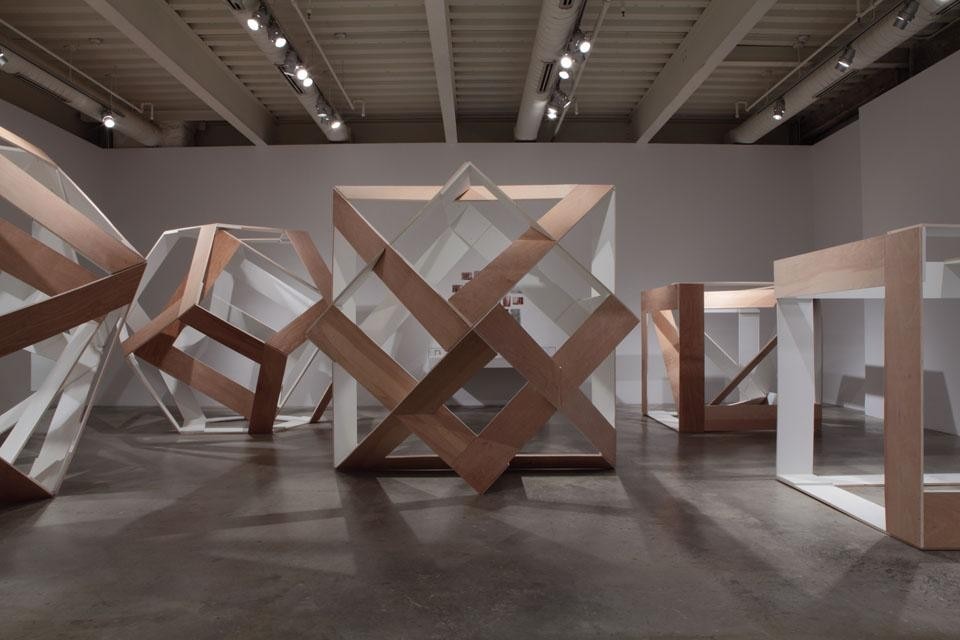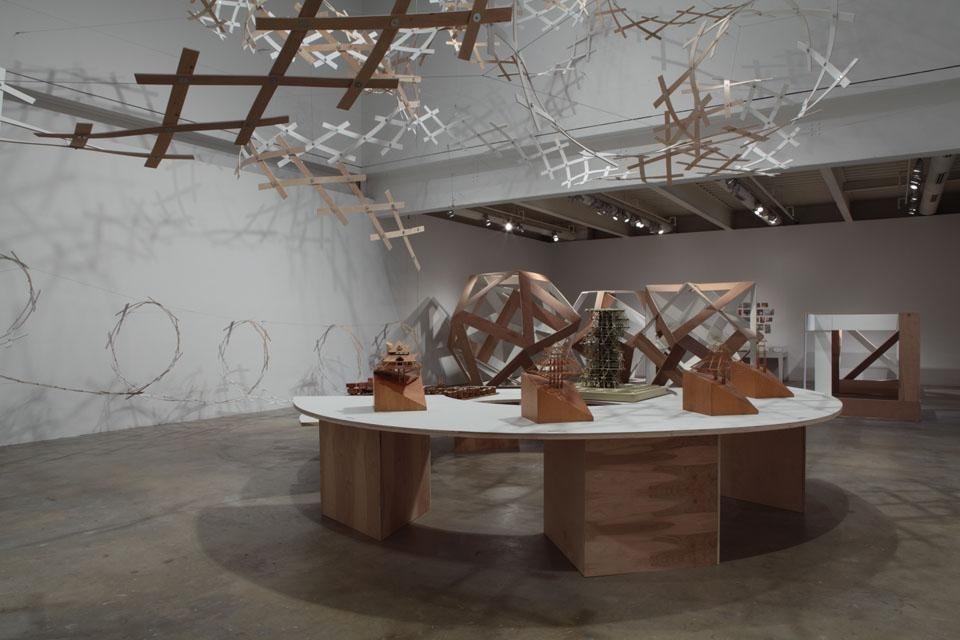Upon entering Tyng's installation at ICA Phila, one walks into the five Platonic solids, literally. A tetrahedron, cube, octahedron, icosahedron, and dodecahedron, each is built to human scale and can be entered, explored, comprehended. For optimum effect, look through these open structures at the massive spiral that lifts from the wall and rotates towards the ceiling. This is how Tyng sees the world and derives her own built forms, through the symmetries, orders, and dynamic progressions by which one form in geometry becomes another. The exhibition – curated by Ingrid Schaffner, Srdjan Jovanovic Weiss, and William Whitaker – also features a selection of drawings, models, and other documentation of past projects, including: City Tower (with Kahn, 1952-1957); Urban Hierarchy (circa 1970); and the Four-Poster House (1971-1974). There are also examples of Tyng's publications and research, which investigate Jungian cycles, city squares, and the cosmos. Throughout, geometry is both rational and expressive, as much a means of contemplation as of calculation and construction.


13 January – 27 March, 2011
Institute of Contemporary Art @ University of Pennsylvania
118 S. 36th Street, Philadelphia
Curators: Ingrid Schaffner, Srdjan Jovanovic Weiss, and William Whitaker



